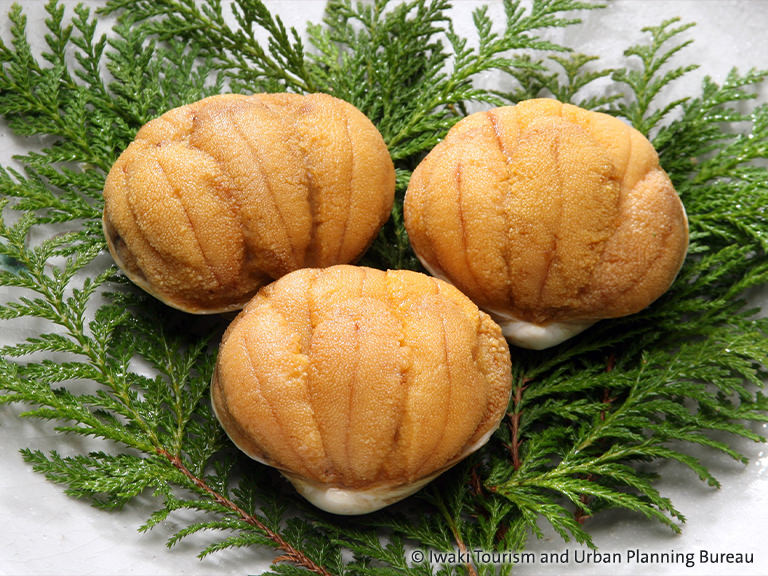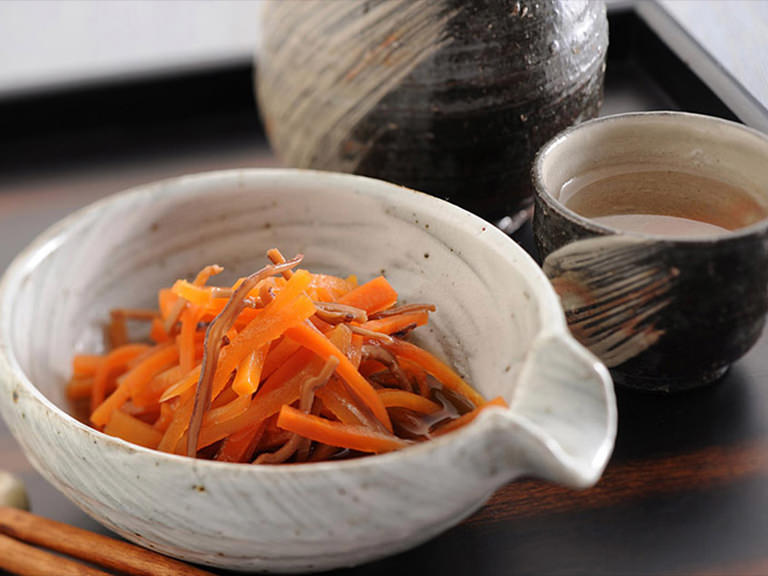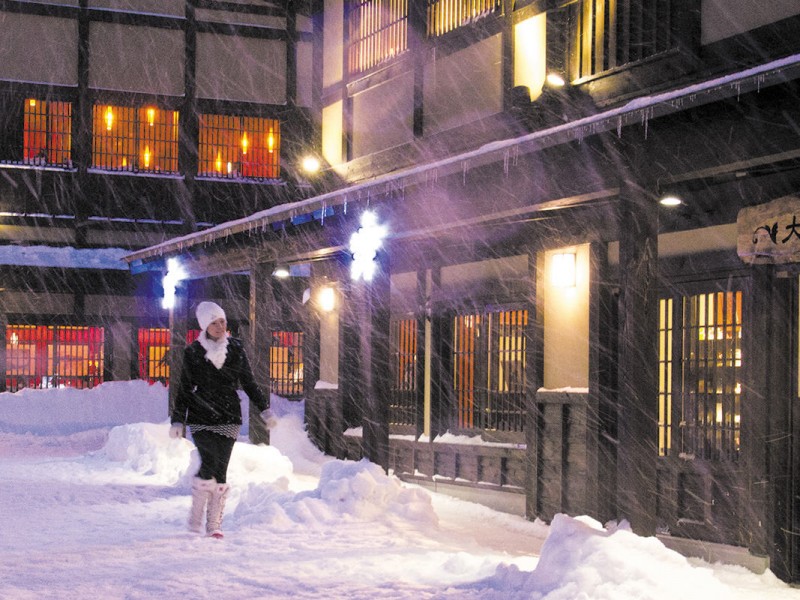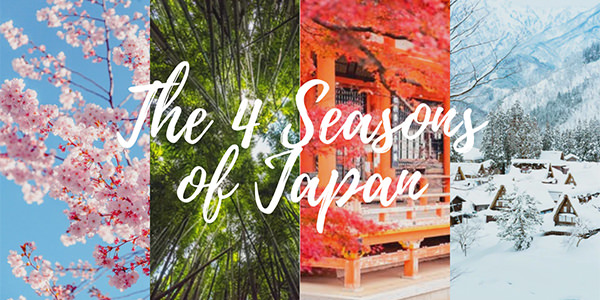Blessed by vast mountains, lakes, and ocean, Fukushima is a treasure trove of produce. Each of the regions of Nakadori, Hamadori, and Aizu have their own distinctive ingredients and cooking styles, yielding a delightful collection of tantalising local meals.
Nurtured by the rich environment and diverse culture, the uniqueness of Fukushima food will no doubt surprise even the most well-versed in Japanese cuisine.
Must-Try Fukushima Local Cuisine for Overseas Travellers
Fukushima offers a wide range of local specialties that will appeal to the taste buds of Australian travellers. Here are some highlights of Fukushima’s local cuisine.
Kitakata Ramen

Kitakata is one of Japan’s three main ramen cities, alongside Sapporo and Hakata. While just a small city outside Aizu-Wakamatsu, Kitakata boasts the highest number of ramen restaurants per capita in Japan. Kitakata ramen is made with a light soy sauce base packed with thick, wavy noodles and a hefty helping of melt-in-your-mouth “chashu” braised pork belly. Depending on the restaurant, the soup may be further flavoured by chicken bones, pork bones, or seafood, creating numerous distinctive takes on the dish.
Katsu-don Special Sauce

Katsu-don Special Sauce is a beloved local dish from the Aizu region of Fukushima. It consists of freshly fried pork cutlet marinated in a special sauce rested on a bowl of warm white rice layered with crunchy shredded cabbage. The generous serving size and sweet sauce is sure to have you addicted at first bite, and its popularity even spurred the founding of an official “Katsu-don Special Sauce Association.” It’s on the menu at countless restaurants throughout the city, each boasting their own carefully crafted rendition.
Cream Box (100-Year Foods)

Cream Box is a local gourmet sweet common at bakeries and school cafeterias throughout Koriyama. Milk-flavoured cream is lavishly spread on thickly-sliced palm-sized white bread, yielding a simple yet satisfying sweetness that can also be enjoyed toasted. Each bakery has its own take on the shape and cream, so be sure to sample a few and find your favourite. Having been passed down for generations as a valuable part of Japanese food culture, Cream Box was officially recognised as a “100-Year Foods” by Japan’s Agency for Cultural Affairs.
Negi Soba

Negi Soba is a dynamic soba noodle dish topped with an entire green onion. It’s a local delicacy unique to Ouchijuku, a historical inn town in the Aizu region of Fukushima, and it has been passed down since the Edo Period (1603-1868). Cold soba noodles are topped with ingredients like bonito flakes, grated radish, and edible wild plants, and the whole green onion is used to eat the noodles in place of chopsticks. You can enjoy different kinds of soba noodles at each restaurant, like Takato Soba, made with 100% buckwheat flour; or Mizu Soba, which uses 100% underground water and local flour. After the noodles are gone, finish up by eating the green onion, which has a spicy kick sure to perk you up.
Enban Gyoza (100-Year Foods)

Enban Gyoza is a style of pan-fried dumplings from Fukushima City. The dumplings are arranged in a circle to be cooked on a frypan, with 20-30 in a serving. Despite being a bulky dish, it has a light taste balanced by vegetables, and is often eaten very quickly due to its delicious taste. Enban Gyoza was born from restaurants opened by returnees to Fukushima City from Manchuria after World War II, and many of the current restaurants have been in business for over 50 years. Having been passed down for generations as a valuable part of Japanese food culture, Enban Gyoza was officially recognised as a “100-Year Foods” by Japan’s Agency for Cultural Affairs.
Fruits

A wide variety of fruits are grown across Fukushima Prefecture, earning it the nickname “Fruit Kingdom.” Northern Fukushima in particular has low annual rainfall, frigid winters, and hot and humid summers, blessing it with an environment suited for both warm and cold-season fruits. Delicious seasonal fruits are available all throughout the year, such as cherries in early summer, peaches in summer, apples and pears in autumn, and persimmons in winter. Plus, the stark temperature differences between day and night in the mountains yield fruit packed with nutrition and flavour. In the fruit-growing region of Northern Fukushima is also the Fruits Line, a road lined by many fruit fields, farm-direct stores, and fruit picking experiences for tourists. Juicy Fukushima peaches are particularly renowned in Japan, and “anpo-gaki” dried persimmon is a beloved winter delicacy boasting a 100-year history.
100-Year Foods of Fukushima
Fukushima boasts a staggering sixteen dishes registered as “100-Year Foods” (the most in Japan!) by the Agency for Cultural Affairs, which seeks out food rooted in regional climate and history (as of June, 2024).
Anko Nabe

Creambox

Enban Gyoza

Imozuimo

Kitakata Ramen

Koriyama Black Ramen

Mehikari Karaage

Radium Egg

Sanma Popoyaki

Shiokawa Torimotsu

Takada Pickled Plums

Uni no Kaiyaki

Kozuyu

Kozuyu is a dish from Aizu made with a variety of local ingredients like wood ear mushroom, shiitake mushroom, konjac noodles, bracken, taro, and more, simmered in a broth made from dried scallop. After being seasoned with soy sauce and mirin, it is often served in a small, locally crafted red lacquerware bowl. Being inland, seafood like scallop was highly valued in Aizu, making kozuyu a treasured dish common at ceremonies and auspicious occasions.
Ikaninjin

Ikaninjin means “squid and carrot,” and that pretty much sums it up! It is a food from the Nakadori region of Fukushima, particularly common in the north. The squid used is dried squid, a common bar snack throughout Japan, sliced thinly together with carrots and flavoured with soy sauce, mirin, and sake. While available throughout the year, it is especially popular with locals during New Year’s.
Benkei

Benkei is a dish local to Haramachiku Kaibama in Minamisoma, a city in the coastal Hamadori region of Fukushima. It is made from daikon radish, dried taro stem, and chilli pepper cooked in soy sauce. Originally served during New Year’s or special Buddhist occasions, it is now regularly eaten during the daikon and taro harvesting season of late autumn and winter. Rather than freshly cooked and warm, locals claim it is more delicious cold, and reheating it is a no-go.
Fukushima’s Sake

Hosting over 50, Fukushima also flaunts the 4th largest concentration of sake breweries makers in Japan with over 50 distilleries. From ancient breweries with over 300 years of history to newcomers seeking to innovate, there’s a fantastic range to sample throughout the land. The sake of Fukushima has a stellar reputation, with one particularly renowned brewery having won gold a record nine consecutive times at the Japan Sake Awards, a nationwide sake competition that has continued since the Meiji period.
As sake is characterised by the local climate and natural features, each region of Fukushima has its own special taste, making it worthwhile trying a brew at each stop!

Suggested Itineraries for Fukushima Food
An Exciting Night Out Drinking With Locals:
Iwaki’s Dawn Bar Hopping Tour
Explore the Nightlife in Aizu-Wakamatsu City:
Hashigo Sake (First-rate Bar-hopping)
Stroll the Ancient Streets of a Post Town and Make Your Own Soba:
Ouchi-juku Time Slip & Soba Making Experience
FUKUSHIMA TRAVEL
Australia’s Official Fukushima Prefecture Representatives
For any enquiries regarding Fukushima tourism, please feel free to reach out to
sales_fukushima@nta.com.au or call
Simon Williamson (Australian Attractions): 0438 744 633
Nippon Travel Agency Australia Sydney Office: (02) 9275-9661

 | Temperature: 24
| Temperature: 24








